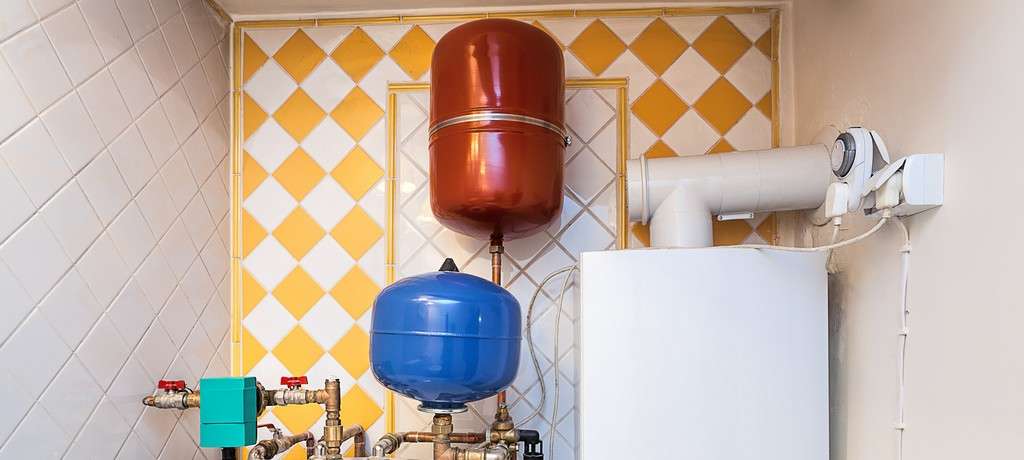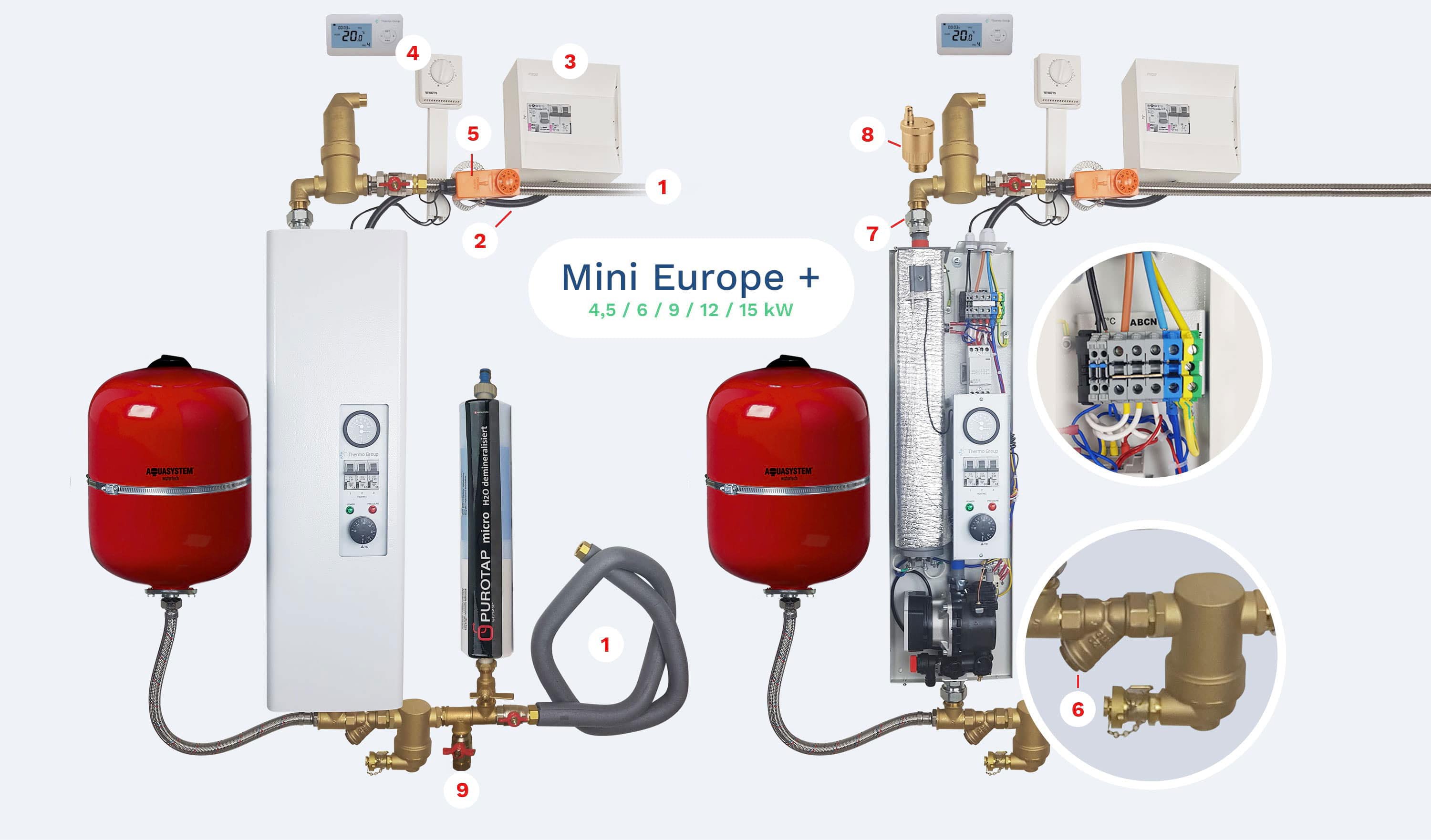
An expansion tank (or expansion vessel) in a heating circuit is essential to keep the installation in good condition. Most of the time red in colour, it is mandatory and is directly integrated into the boiler or installed nearby. You can discover here the role of an expansion tank and its impact on your boiler operation.
What is an expansion vessel?
The volume of water in your heating circuit can vary depending on the temperature. During the heating cycle of the electric boiler, some water disappears. This causes a change of the volume in the central heating duct. This dilation of the water in a closed circuit causes a rise of the pressure, which can be damaging for the boiler.
The expansion vessel is the solution to this risk of deterioration since it allows the water volume variations to be absorbed and to maintain a quasi-stable pressure in the boiler. This prevents overpressure (when the water is heating up) and depression (when the water is cooled) in the central heating circuit.
Where is an expansion tank installed?
An expansion vessel looks like a metal cylinder. It is usually connected to the return of the heating water from above for the water that is in contact with the membrane can be cooler. Under the expansion tank is placed a valve that allows inflating the gas envelope.
During the installation (if it is not directly integrated into the boiler but installed nearby), the expansion tank must be inflated with the correct pressure before filling the heating circuit with water. Its volume and pressure will be finely calculated by the installer, depending on the power of the boiler and the height of the installation.
What are the different types of expansion vessels?
There are essentially two families of expansion vessels: closed and open, which can be of variable pressure. Those commonly found on electric boilers are the closed expansion vessels with variable pressure.
Those are then distinguished into two types of vase: bladder vessels and diaphragm vessels. Bladder vessels have better tightness. They do not allow the contact between the water contained in the circuit and the walls of the vessel. This limits the corrosion phenomenon which causes damage to the installation.
The dangers of a defective expansion vessel
A defective expansion vessel firstly causes a pressure drop in the central heating circuit. Then this malfunction increases the risk of slugging the boiler. The heating mud is known for its disastrous effect on the installation. And if the water in the area is hard, the limestone will start to form in the ducts at each filling.

